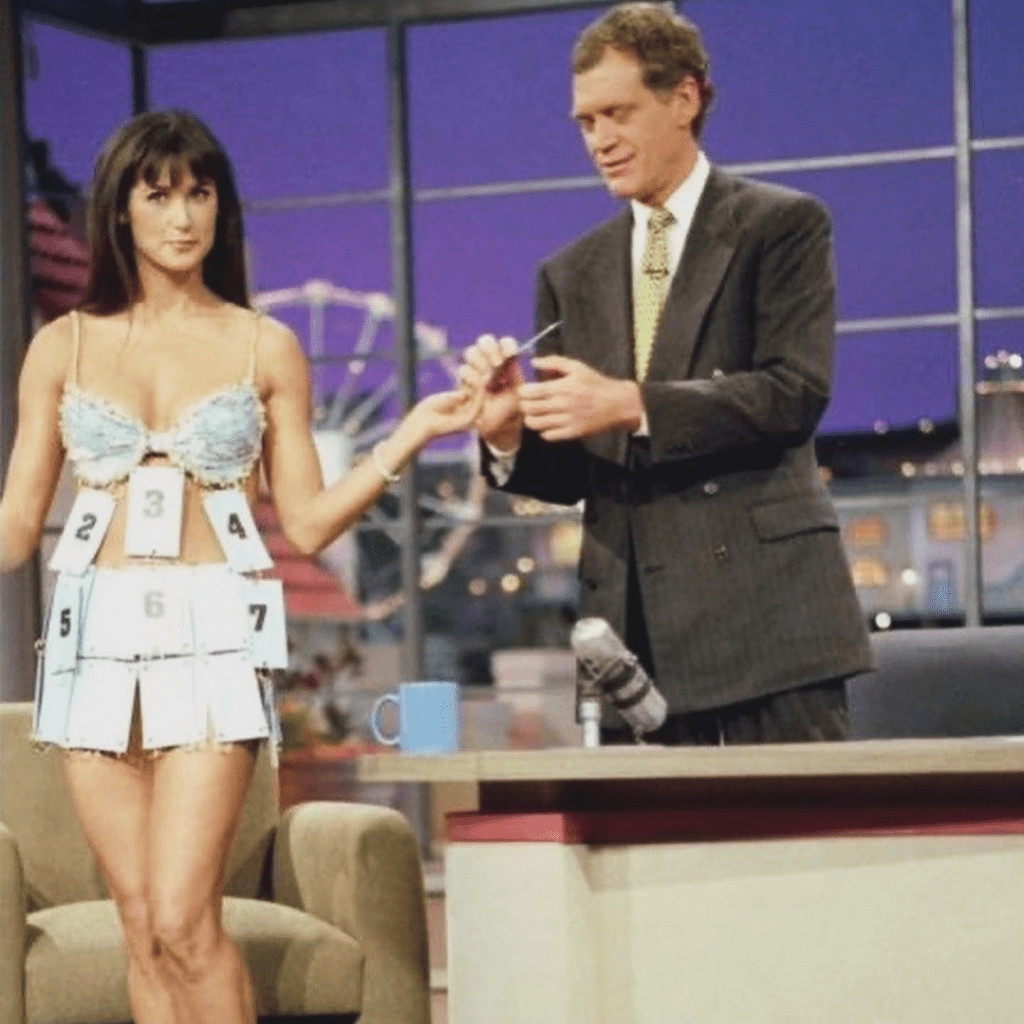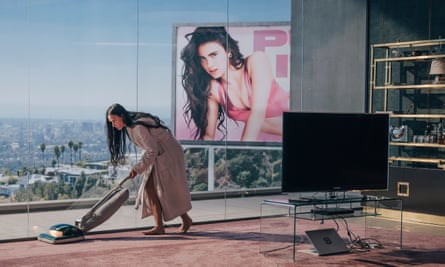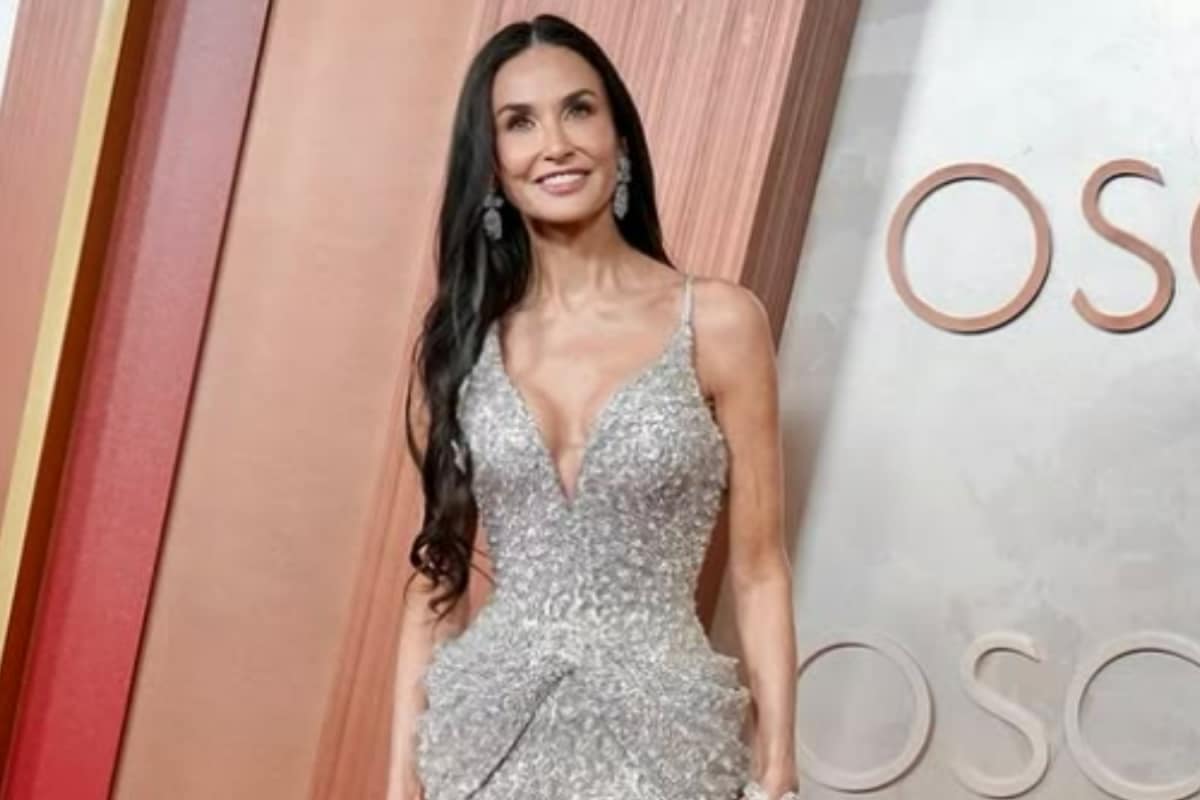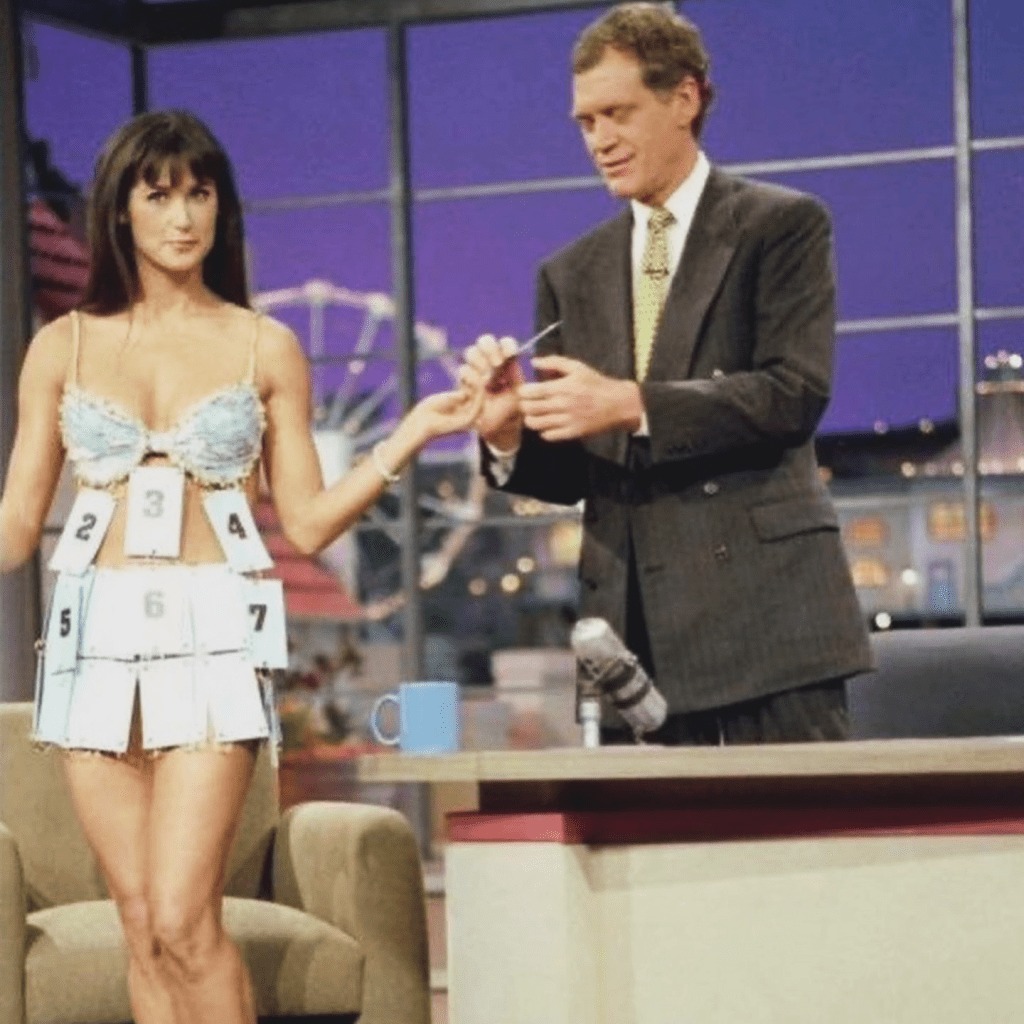Late-night television has long been a stage where celebrities reveal their personalities beyond their on-screen roles. Among these memorable moments, Demi Moore’s appearance on The Late Show with David Letterman stands out for its cultural relevance, fashion impact, and expression of self-assurance during a pivotal era in her career.

A Renowned Career Leading Up to Late-Night Spotlight
By the time Demi Moore appeared on The Late Show, she was already a prominent figure in the entertainment industry. Her rise to fame was marked by a series of critically and commercially successful films that helped define the cinematic landscape of the late 1980s and early 1990s.
Her role in Ghost (1990), alongside Patrick Swayze, became a major box-office success and garnered widespread acclaim. The film grossed over $500 million globally, making it one of the top-earning films of the year (Box Office Mojo, 1990). Moore followed this success with notable performances in A Few Good Men (1992), co-starring with Tom Cruise and Jack Nicholson, and Indecent Proposal (1993), further solidifying her as a leading actress of her time.
Moore’s acting career wasn’t just notable for her roles; she also played a key part in advancing conversations around pay equity in Hollywood. In 1996, she was reportedly paid $12.5 million for her role in Striptease, which was among the highest salaries for a female actor at that time (Los Angeles Times, 1996). This milestone contributed to ongoing discussions about gender parity in the entertainment industry.

The Appearance That Turned Heads: The Late Show with David Letterman
Demi Moore’s appearance on The Late Show with David Letterman was widely discussed in media outlets for its confident display of fashion and presence. Moore arrived in a sleek, stylish two-piece outfit that caught the attention of both the audience and the host. While unconventional by late-night talk show standards, the ensemble was not inappropriate for television and did not violate broadcast guidelines.
Though some headlines described the moment as daring, the focus of the appearance was ultimately about Moore expressing confidence and control over her public image. She demonstrated poise, humor, and charisma throughout her interview with David Letterman, contributing to a relaxed and engaging conversation that connected with audiences.
The segment was received positively by many fans and commentators at the time, with coverage focusing on Moore’s assertiveness and unique sense of style. Her choice of wardrobe was consistent with the evolving fashion trends of the mid-1990s, when individuality and breaking away from traditional molds were becoming more celebrated in mainstream media.
Fashion as a Form of Individual Expression
Moore’s late-night appearance exemplified a broader movement within the fashion world where public figures used their platforms to explore personal identity and creativity. The 1990s were marked by a shift toward self-expression, and celebrities often influenced or reflected this cultural moment.
Moore, like other high-profile figures, used media appearances to assert control over her narrative. Her outfit on The Late Show was not controversial by today’s standards, but at the time, it was seen as a powerful example of personal confidence and stylistic freedom. Rather than conforming to expected norms, Moore embraced a look that aligned with her own vision—something increasingly common among public figures advocating for authenticity in entertainment.
A Look at the Era: 1990s Media and Representation
The media landscape of the 1990s was undergoing significant change. Public figures were beginning to challenge the traditional expectations placed upon them—particularly women in the entertainment industry. The decade saw a growing number of female artists, actresses, and professionals stepping into roles that promoted autonomy and rejected outdated stereotypes.
Demi Moore’s public appearances reflected these broader societal changes. Through fashion, interviews, and film choices, she consistently emphasized independence and empowerment. Her Late Show moment, although just a few minutes on screen, came to symbolize the assertiveness that was increasingly embraced during the decade.
According to the Smithsonian Institution, the 1990s witnessed a strong movement of cultural transformation, with celebrities influencing everything from gender norms to workplace equality. Moore was among the figures whose career intersected with these cultural shifts in visible and impactful ways.

Continued Influence and Career Achievements
After her Late Show appearance, Demi Moore continued to remain relevant in both film and public discourse. Her work has included a mix of acting, producing, and advocacy. She has supported initiatives focused on child trafficking prevention and gender-based issues, including work with organizations such as Thorn, a non-profit co-founded by Ashton Kutcher and supported by Moore, which focuses on protecting children from online abuse (Thorn.org, 2023).
In 2019, she published her memoir, Inside Out, which became a New York Times bestseller. The book offered a candid look at her personal journey, career milestones, and experiences as a woman in Hollywood. It was widely praised for its transparency and resilience, helping further the conversation on mental health and recovery.
Moore’s longevity in the entertainment industry speaks not only to her talent but also to her ability to evolve and remain relevant. Her career continues to inspire emerging artists who look up to her as a symbol of perseverance and integrity in a highly competitive field.

A Legacy That Goes Beyond a Single Moment
Although her Late Show appearance is often remembered in discussions of iconic late-night moments, it represents just one example of Moore’s broader legacy. She continues to be regarded as a trailblazer in Hollywood—not only for her on-screen performances but for her unwavering commitment to advocacy and breaking barriers.
In the decades since that appearance, the entertainment industry has become more inclusive and diverse, and voices like Moore’s have played an important role in paving the way for those changes. Whether through film, public speaking, or activism, she remains a respected figure in the world of arts and culture.
Conclusion: A Lasting Impact on Entertainment and Culture
Demi Moore’s career is filled with meaningful performances and significant contributions to entertainment, culture, and advocacy. Her appearance on The Late Show with David Letterman served as a moment that encapsulated her confidence, individuality, and status as a Hollywood icon during the 1990s.
Today, Moore continues to inspire fans and fellow professionals alike. Her journey exemplifies how authenticity, strength, and courage can leave a lasting legacy, both on and off the screen. As the entertainment industry continues to evolve, Moore’s story remains a powerful reminder of what it means to shape your own narrative with integrity and purpose.
Sources:
-
Box Office Mojo. (1990). Ghost – Box Office Results
-
Los Angeles Times. (1996). Moore Tops Salary Charts with $12.5 Million Deal
-
Smithsonian Institution. (2020). Cultural Trends of the 1990s
-
Thorn.org. (2023). Our Mission and Founders
-
The New York Times. (2019). Bestseller List: Inside Out by Demi Moore


